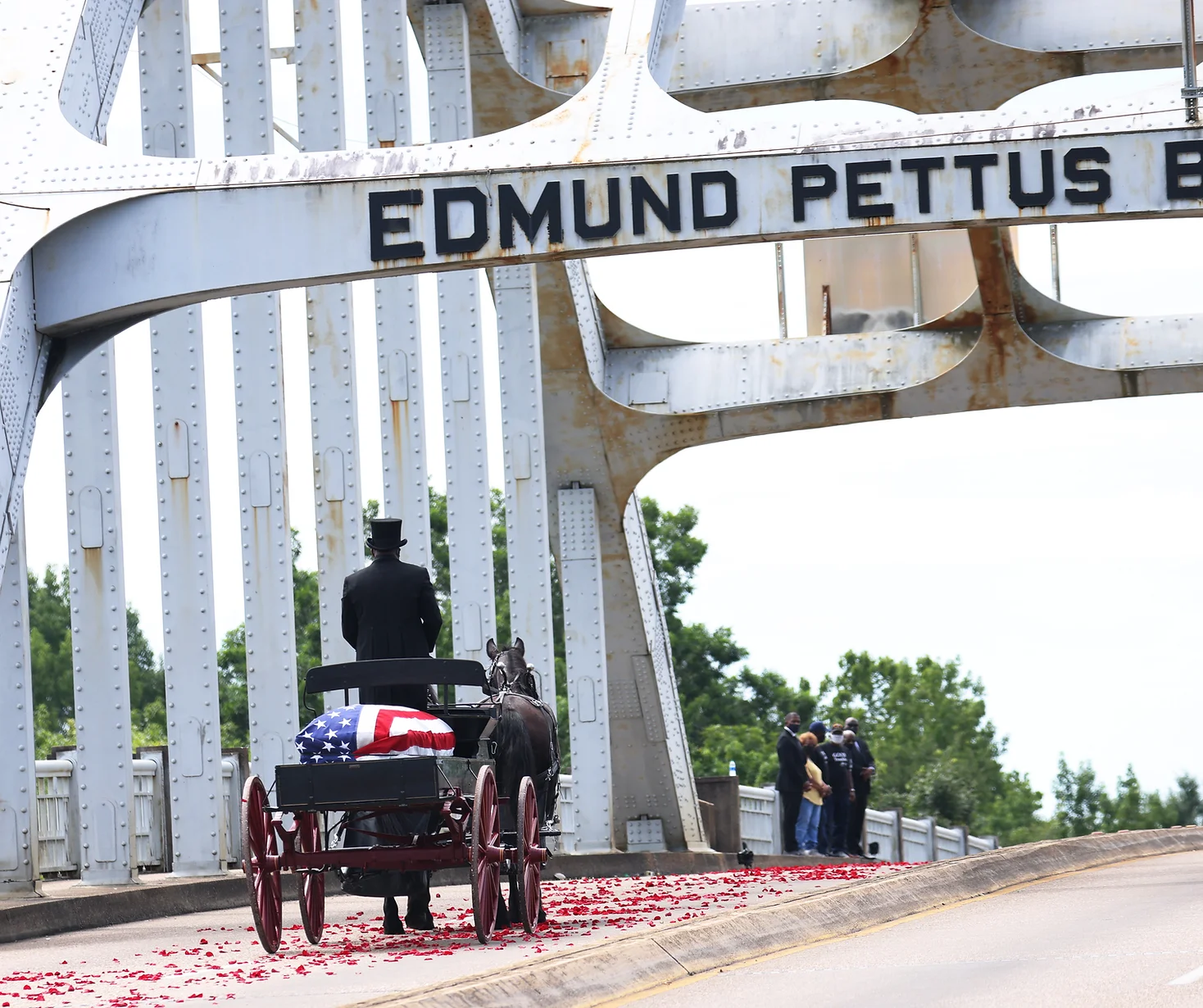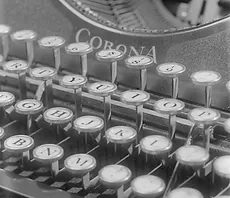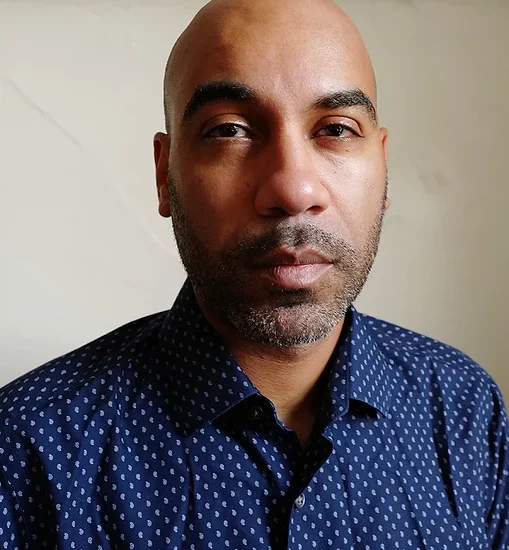Photo by Michael M. Santiago/Getty Images News/Getty Images
I have always been passionate about U.S. history. As an immigrant to this country from the Dominican Republic, learning about the things that had happened in what became my new home fascinated me.
In middle school, when we began our study of the Civil War, I carried a 98 percent grade. I read everything I could. I would glance at pictures in textbooks, but the words were far more important to me then. I didn’t fully appreciate how photos expanded the context of what I was reading. That was until I took my first photography class in 10th grade and started to become more aware not only of the photos in our textbooks but of the photographers who had captured that history.
All of that was over 25 years ago. I continue to love and to study history. As my photojournalism career has fully convinced me, the images my colleagues and I make in the present are vital to the continued telling of our country’s true story. I became a photojournalist because I wanted to document history in the making.

Photo by Afro Newspaper/Gado/Archive Photos/Getty Images
Reporters have long recognized the power of photographic documentation. In his memoir Leaving Birmingham, Paul Hemphill, a journalist and former resident, described the 1963 photograph by Bill Hudson that shows Walter Gadsden being attacked by a police dog in Birmingham, Alabama as “an image that would burn forever.” (The image above captures the same moment by a different photographer at the civil rights demonstration.)
U.S. leaders understood the power of Hudson’s image to transcend language and send a global message. “What a disaster that picture is. That picture is not only in America but all around the world,” President John F. Kennedy reportedly said of Hudson’s work.
Photography was and continues to be one of the most powerful tools to disrupt the powers that be and to help implement change. The photos of African Americans being attacked by police with K-9 dogs and hosed in the streets shocked and moved northern white people and contributed to the passing of the monumental Civil Rights Act of 1964.
But the photos from Selma of 25-year-old Civil Rights activist John Lewis and 600 other marchers under attack by Alabama State Troopers on “Bloody Sunday” ensured a monumental change in this country.

The images of state troopers beating the marchers attempting to cross the Edmund Pettus Bridge, named after a Confederate general and reputed grand dragon of the Alabama Ku Klux Klan, for the audacity of demanding their constitutional rights have been seared into the mind of every American since that fateful day (and can be seen in the photograph here).
That day, Americans were tuned in to the television premiere of “Judgment at Nuremberg,” a film depicting the war crimes of the Nazis and the moral accountability of those who followed orders and didn’t speak out against the Holocaust. With a touch of irony, given that the Nazis had modeled the Nuremberg Laws on Jim Crow laws, Americans across the country instead witnessed the brutality of the troopers beating the marchers as the film broadcast was interrupted by the breaking news.
What happened in Selma helped to change public opinion, and Congress would go on to pass the Voting Rights Act with President Lyndon B. Johnson signing the law on August 6, 1965.

Photo by Bettmann Collection/Getty Images
One image I have never forgotten is that of John Lewis on the ground attempting to stop a white state trooper from clubbing him over the head. That photograph renders significant an image I took of Black state troopers saluting the casket of John Lewis as a horse-drawn carriage prepares to bear it across that very same bridge where he had risked his life some 56 years earlier (see the original photo above and my photograph below.)
I always wanted the opportunity to photograph John Lewis while he was alive. He was an icon, someone who will live on forever in the history of this country. I wanted the opportunity to have my images of him added to the collection of historical documentation of his life. Sadly, I did not have that opportunity, but I jumped at the chance to photograph his funeral services back in Selma and Montgomery. This was my opportunity to build on that history
I was nervous about it. Not only would this be my first big assignment for Getty Images, but it was one that the nation would be watching. I focused on making sure that the images matched the historical significance of the moment.

I could not fully experience the moment like all the others who gathered to see Lewis cross that bridge for the final time because I was in charge of making sure those who could not witness it for themselves had an opportunity to see it through my eyes. And because of that, I had to make sure that my frames of the event were perfect. My ideal image of the procession had to evoke a unique emotion within you and make you feel a certain type of way when viewing it. It had to make you feel as if you were there seeing it for yourself.
I spent the morning scouting the best locations. Most photographers positioned themselves to get the image of the crossing of the casket on the side of the bridge that leads out of Selma. But my instincts told me that shooting the casket as it prepared to cross it would be the better choice. I placed myself in a spot that felt suitable, I took mental notes of where I wanted my “perfect photo” to be, and I made test photos. I tested out different lenses and various focal lengths until I felt sure of myself.
During that moment, three young men began to place wreaths at the foot of the bridge and spread rose petals on the ground leading to the bridge and onto the other side. The petals represented the blood that was spilled on Bloody Sunday. Before I knew it, Broad Street, the street leading to the bridge, was swarmed with people on both sides.
My perfect spot was now taken over by folks who wanted one last look at this icon and to say their goodbyes. I had to adjust and did so with just enough time before news started to spread that he was on his way. Excitement filled the air once everyone saw the horse and carriage. I began to hear singing and saw people across the street swaying in unison. The state troopers stood at attention, which was something I took a mental note of. And it paid off because once the horse and carriage was in front of them, they saluted.

Photo by Michael M. Santiago/Getty Images News/Getty Images
To me this was an important historical moment because 56 years ago it was white troopers who were beating Lewis and stopping him and the marchers from crossing that bridge. Now Black troopers saluted his casket as it embarked upon its final passage.
Once the horse and carriage got to where I wanted it to be, I began to snap away. Since the crowd was larger at this point than earlier, I climbed on top of a structure ensuring that I was able to see over everyone and make the photograph I had envisioned. To me, spiritually, at that moment heaven’s gates were opening and Lewis was stepping into heaven.
That photo would go on to be the A-1 photo of the following day’s Washington Post. It would also be my defining picture of that year. To me it was the one photo that mattered. It was the one photo that I made that I believe would make it into an actual history book. One that could possibly land in front of my daughter while she is in school, where she would see my name and exclaim to her class, “This is my daddy’s photo!”







